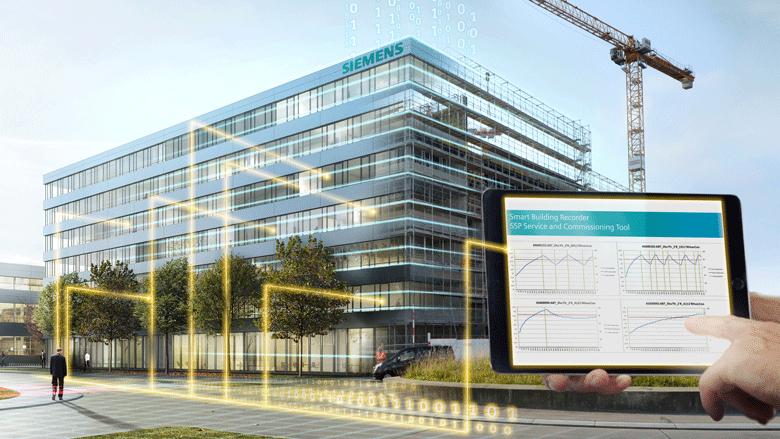The rising urbanization in India is driving the growth of construction industry , that in turn providing the momentum to the market growth of the building materials. Building materials are the type of materials mainly used in constructing buildings, bridges, and dams, etc.
Every building material has its different properties, such as weight, strength, durability, and cost. The selection of the building materials depends on various factors, such as its load-bearing capacity and the stresses acting on the structure.There are two types of building materials-artificial building materials and natural building materials. Artificial materials are manufactured artificially and used in different construction activities. For example- bricks, cement, steel, glass, and plastics, etc. While the latter occurs naturally. For instance- rocks, wood, bamboo, glass etc.
The building construction market was hampered during the outbreak of COVID-19, particularly during the lockdown period, as the strict restrictions set by the governments of all the nations around the world crippled all kinds of activities. However the market started recovering by the end of 2021 and it showed slow and steady growth. The huge demand for residential and commercial buildings, infrastructure, transportation, and technology has contributed towards the growth of the construction industry and consequently the building material segment. The policy reforms like RERA,GST and REIT were introduced with a goal of providing impetus to the sector. Furthermore, in year 2022, reforms like – availability of housing loans to all segments, long term funding support in case of long gestation projects and compulsory adherence to the contracts, further refinements in the tax sops available for housing industry and recognizing real estate sector as part of infrastructure- have been introduced to provide financial impetus to the industry. With this, the sector is expected to show positive growth.
As per market reports,the building material industry stands at around USD 225 Billion in terms of market size. The reports further expects the building material industry in India to grow by 8%-10% in 2022.While other reports forecast building materials to record a CAGR of 15.7% Y-O-Y to reach $738.5 bn by 2022.It is estimated to clock a CAGR growth of 8% to 9% in the next five years. Other prominent market reports say that the building construction industry in India is expected to record a CAGR of 15% to reach INR 29,782.2 billion by 2024. The residential construction industry in value terms increased at a CAGR of 11.1% during 2015-2019. The commercial building construction market in value terms is expected to record a CAGR of 16.1% over the forecast period.
Urban areas are expected to become home to 40% of India’s population and contribute to 75% of India’s GDP by 2030 with the increase in urbanization. The number of cities with a population of more than 1 million has increased from 35 in 2001 to 53 in 2011. This is expected to be 87 by 2030. After agriculture, the building materials industry is the second largest employer in the country. The sector employs a large number of people and also contributes significantly to the nation’s economy. It accounts for 8% of India’s GDP and is valued at approximately $126 bn.
The Indian building construction market is expected to reach INR 29,782.2 Billion by 2024. Market reports estimate the income of the commercial building construction industry to be Rs.15771 billion in 2022. Moreover,Indian real estate sector market size is predicted to be around Rs.70 trillion by 2030. Its input to the country’s GDP is likely to be roughly 13% by 2025. Since, construction, infrastructure and real estate industry in India will continue to rise the demand for building material will be buoyant, too.
Another report says that the building materials market size is expected to grow at a CAGR of 4.76% over the forecast period 2022-2029. The building material market includes brick, cement, sand, aggregates, and stone manufacturers. Amongst the utmost used building materials are glass, steel, plastics, cement, and wood. The industry producers are associated with industries containing manufacturers and furniture manufacturers.
Increasing demand for housing units and infrastructural facilities, rising urbanization, growing real estate investments, and the Popularity of stamped & decorative concrete are the factors driving the growth of the global building materials market.
There are many different types of building materials used in the construction industry including Concrete, Steel, Wood and Masonry. The choice of materials for construction is based on cost and effectiveness for the structure. Nowadays, the modern building town infrastructure depends highly on prime building materials and this is surely witnessing the rise ,considering the process of urbanisation all over the country.
As per reports, some of the segments like ready-mix-concrete(RMC), uPVC and aluminium doors and windows, and the tiles segments are expected to grow. The new concept of work from home or hybrid working will further drive the demand and sales especially for high end products in these categories.
RMC demand in the retail segment is also expected to grow, given the increased construction of residential and commercial real estate projects.Due to the aesthetics, quality and functionality the demand for the doors and windows, sliding & casement applications will continue to dominate the overall demand. As per market reports, glazed vitrified tiles (GVT) are estimated to grow more in demand, due to their features like varied designing and customizing options.
Emerged economies have been facing constant renovation and enlargement initiatives over the industries such as commercial, and industries. The growing industrial enhancement over the emerging regions mainly in eastern Europe will encourage the global market share.
Though demand forecasts and consumer buying trends look promising, market leaders feel that the growth can only be made seamless by supportive government policies. For instance, increasing the buying power of the customers by providing provisions to allow housing loans for all segments.
It is a foregone conclusion that developments in the housing sector directly impact the building materials industry.Therefore, market players expect a greater role of government by providing suitable support that would continuously propel the growth of the segment. There is a need felt by the leaders to provide real estate the status of infrastructure to boost its growth.
Though the rising rates of input materials is showing impact on the overall demand,still leaders hope to see stabilisation in the prices and the overall scenario.
Market reports have estimated the global market for building materials to be USD 480 billion by 2026 and will show a CAGR of 18% over the forecast period. These can mostly be seen in seaside regions and mountain resorts with picturesque beauties and historic monuments, leading to an increased number of hotels and resorts, open areas and public gardens. This will increase the market demand for outdoor furniture through an increasing number of hotels and restaurants.
The Europe market is leading in the global building materials market, followed by the North America region. Growing markets are projected to produce robust growth. Increasing consumer lifestyles, eco-friendly worries, reasonable prices, and higher efficiency will boost the market growth.APAC region is estimated to lead the overall materials market in the coming years. Countries such as China and India are the major players in Asia-Pacific’s market growth. Developed countries such as the U.S., Russia and the U.K are estimated to grow at a steady rate in the coming five years.
Innovation in the industry is redefining infrastructure as it is bringing in innovative construction styles along with the use of robust technology and high end and durable construction and building material to ensure longevity and sustainability. The rise in the numbers of skyscrapers and huge infrastructure projects is creating a demand for the most appropriate materials. In 1990, the Indian Government took an initiative under the Building Materials & Technology Promotion Council (BMTPC) to encourage and promote sustainable, energy efficient and environmentally feasible building materials.
The COP26 (26th UN Climate Change Conference of the Parties) is urging industries to focus on using and producing environmentally sustainable products, especially in the case of construction industry.So, in a bid to fight the climate catastrophe, the industry should attempt to minimize impact and use 100% recyclable products or eco-friendly products etc. wherever possible, for a sustainable future.
This would pave the way for green construction materials in the industry.Green building material is a material that improves a building structure’s sustainability and efficiency in terms of design, construction, maintenance, and renovation. These materials are highly energy efficient and made from renewable waste sources. Mycelium, hempcrete, recycled plastic, straw bales, bamboo & wood, rammed earth, timbercrete, and grasscrete are utilized in the construction of green building material.
Building and construction sectors account for more than 2/3 of the world’s total greenhouse gas emissions. There is, therefore, a huge potential to reduce greenhouse emissions by building smart cities that would be energy efficient using sustainable materials that would consume low energy. There is also a need to update existing buildings. Factors that drive the market for green building materials are — low operating and maintenance costs and pressure on pollution-related environmental legislation. In addition, in developed countries, the government has implemented policies and incentives to promote green building, which complements the growth of the sector.
India is also witnessing the rise of sustainable building material companies for the past few years. Strict environmental regulations and policies have resulted in increased focus towards environmental friendly materials in both manufacturing and operational phases of the building and housing industry worldwide.
As the need for futuristic homes increases, we also need to be responsible for the environmental impact that our population leaves behind. Choosing green building materials like clay can help the cause of the environment and is perhaps the best solution at hand presently. Strict environmental regulations and policies causing increased attention towards development of environmental friendly materials in both manufacturing and operational phases of the material life cycle of the building and construction industry worldwide. The sector is now open to new and efficient technologies material manufacturing. Few noteworthy new technologies in recent years being geo-polymer concrete, foam concrete and efflorescence materials.
The growth of the building & construction material market is in line with the construction market. Green building materials are becoming increasingly popular in various construction projects as they minimize the environmental impact of building materials associated with installation, transportation, manufacturing, processing, disposal, and recycling. Rise in preference for these materials over traditional construction materials is expected to boost the green building materials market’s growth. They help to reduce carbon emissions, which in turn helps to reduce global warming. Additionally, they are energy-efficient & environmentally friendly, making them easy to maintain and cost effective. When compared to standard construction materials, the advantages of green building materials make them an excellent alternative. Furthermore, governments in developed nations implemented policies and incentives to encourage green construction, which is anticipated to boost the demand for green building materials.
Few sustainable materials are, Elastopor and Elastopir, BASF’s PU rigid foam systems for sandwich panels . These are made from renewable raw materials of the same high quality as traditionally manufactured products. Furthermore, using the BASF Biomass Balance method, which replaces fossil resources with up to 100 percent renewable raw materials, a significant reduction in CO2 emissions can be accomplished.
The growing desire to ensure energy and process efficiency to industrial processes and increasing energy prices act as a major driver for the global green building materials market. However, the negative impact of petroleum-based green building materials on the environment tends to restrict the market growth of the respective market. Also,the decreased income per capita in some of the countries is anticipated to restrain the construction activities from the residential sector. In addition, exorbitant production costs connected with the manufacture of green packaging materials may dissuade small-scale enterprises from entering the market, limiting the market’s growth. The green building material market has also been hampered by a lack of information regarding the use and benefits of eco-friendly materials used for construction in rural and impoverished areas. As a result, such places have low consumer demand, which has had a negative impact on the production rates of green construction materials.This might prove to be a deterrent to the green building materials market growth.
However,the growing environmental awareness could provide high market growth to the green building materials market.Some governmental and private groups are working hard to encourage the sale and usage of environmentally friendly packaging among business owners and customers. While some organisations are also developing newer and more cost-effective green construction materials to significantly lessen the consequences.
The green building materials market size was valued at $237.3 billion in 2020, and is projected to reach $511.2 billion by 2030, growing at a CAGR of 8.1% from 2021 to 2030.
Final Words:
Since, the building materials industry is the material foundation for all construction engineering. Building materials industry, which is one of the important basic industries of the national economy, promotes the development of the construction industry.
As per experts,building materials not only have a large consumption, but also are expensive. In the total cost of the construction, the cost of building materials often accounts for about 50 percent. Thus, it is significant to properly choose and reasonably utilize building materials in the construction for the reduction of costs and the improvement of investment benefits.
High quality building materials can help in the development of a well built society and thus contribute to the rapid development of the national economy.
Finally, industry experts believe that green building material is paving the way for many innovative products and solar products are considered to be the most lucrative segment.








